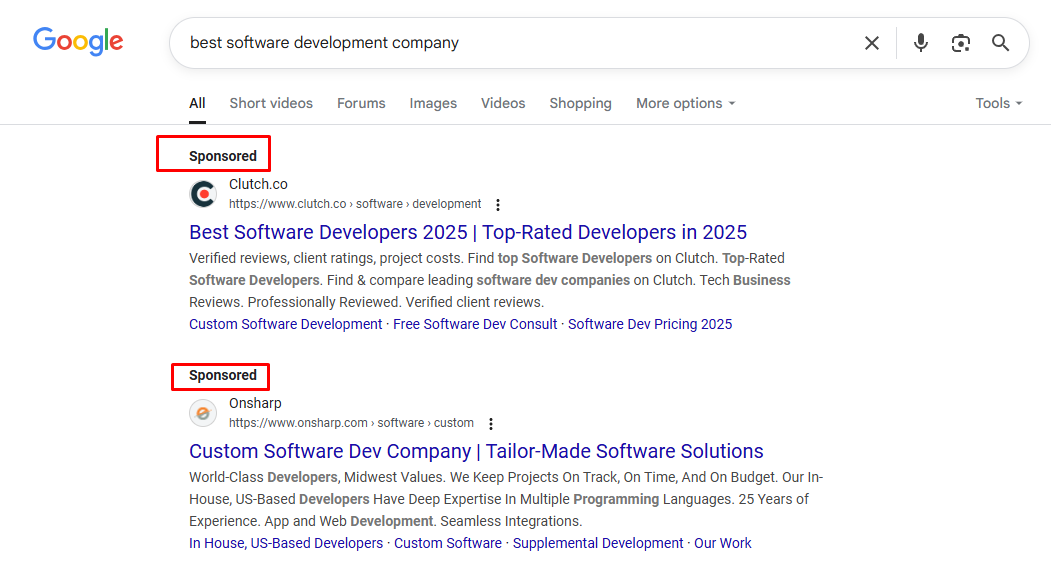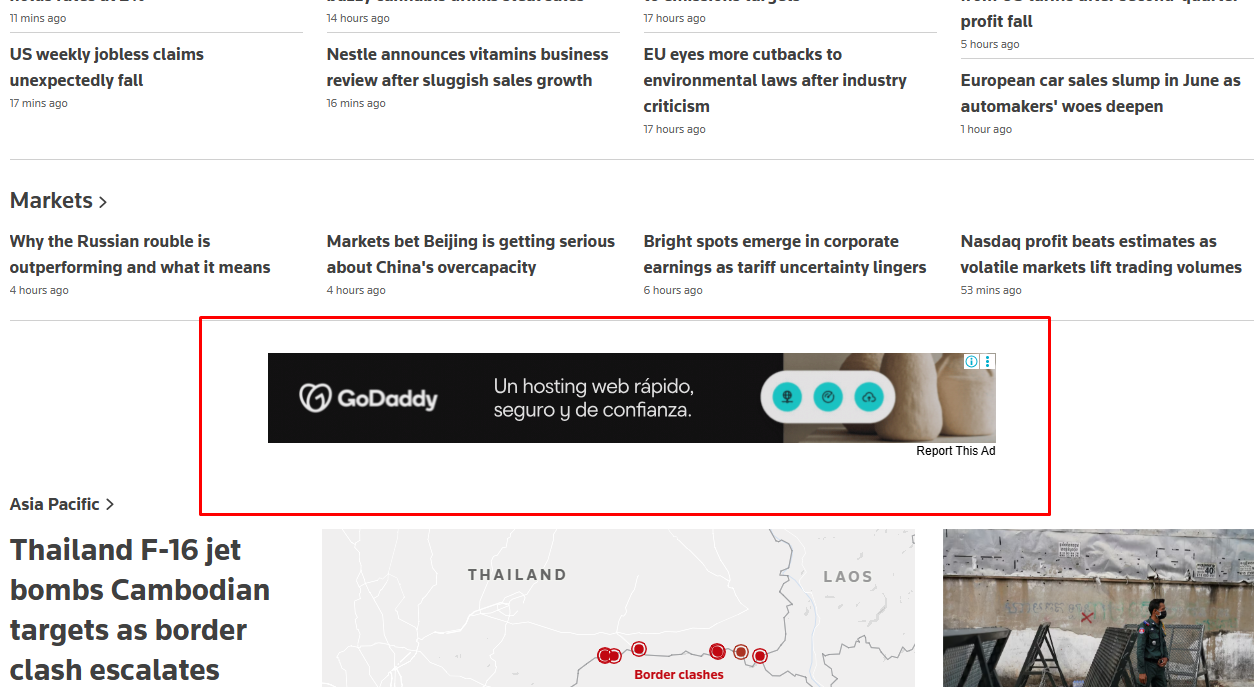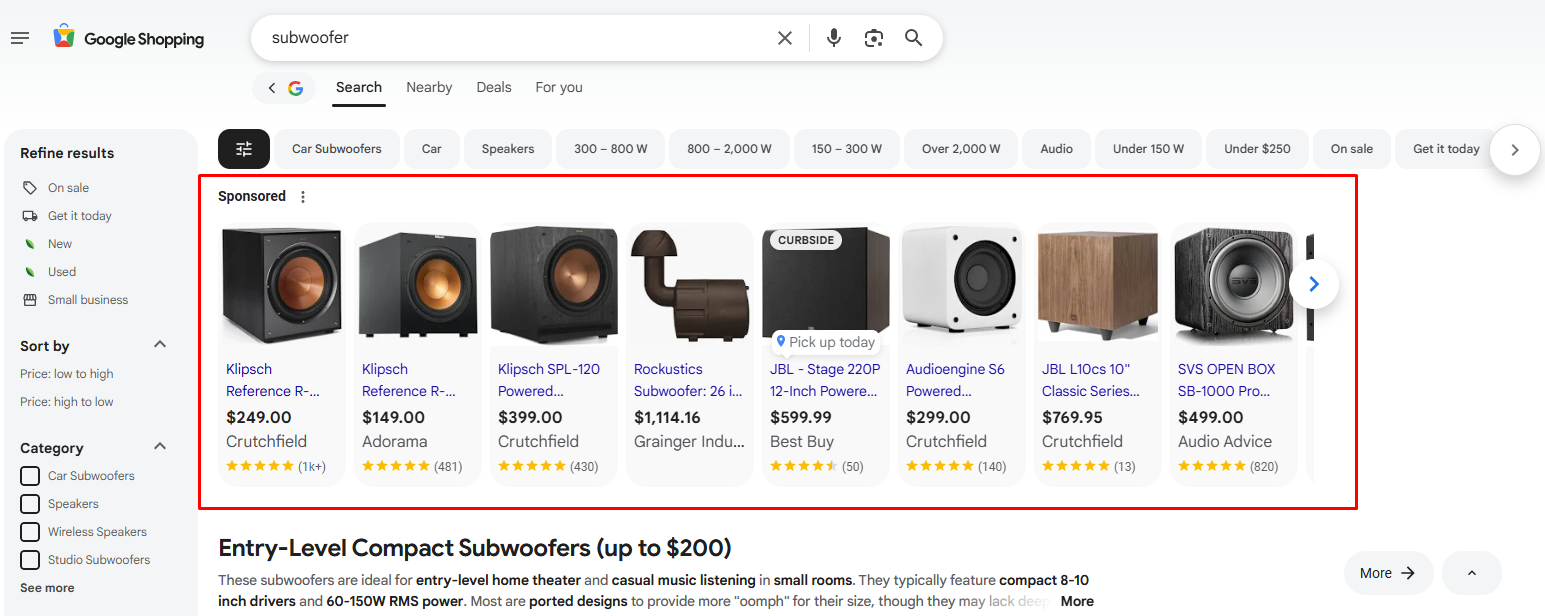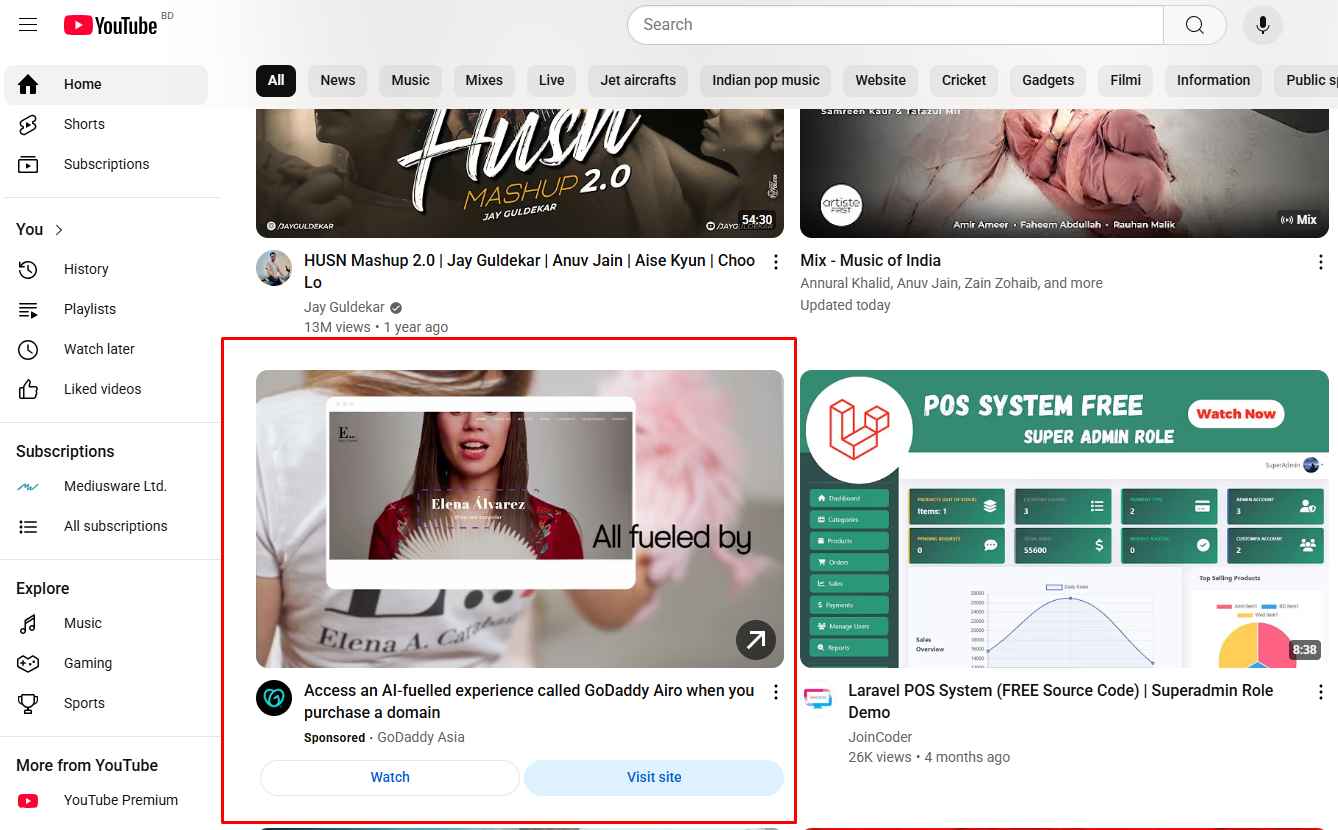PPC isn’t limited to one platform. Here are the top six advertising platforms in 2025:
Google Ads
Google Ads is the king of PPC platforms (it holds market share of 39%), and it allows you to run ads across the entire Google network, which includes
- Google’s search results pages
- Google-owned platforms like YouTube and Google Maps
- Thirty-five million third-party websites and apps make up the Google Display Network
There are six popular types of Google Ads campaigns you can choose from: search, display, shopping and video.
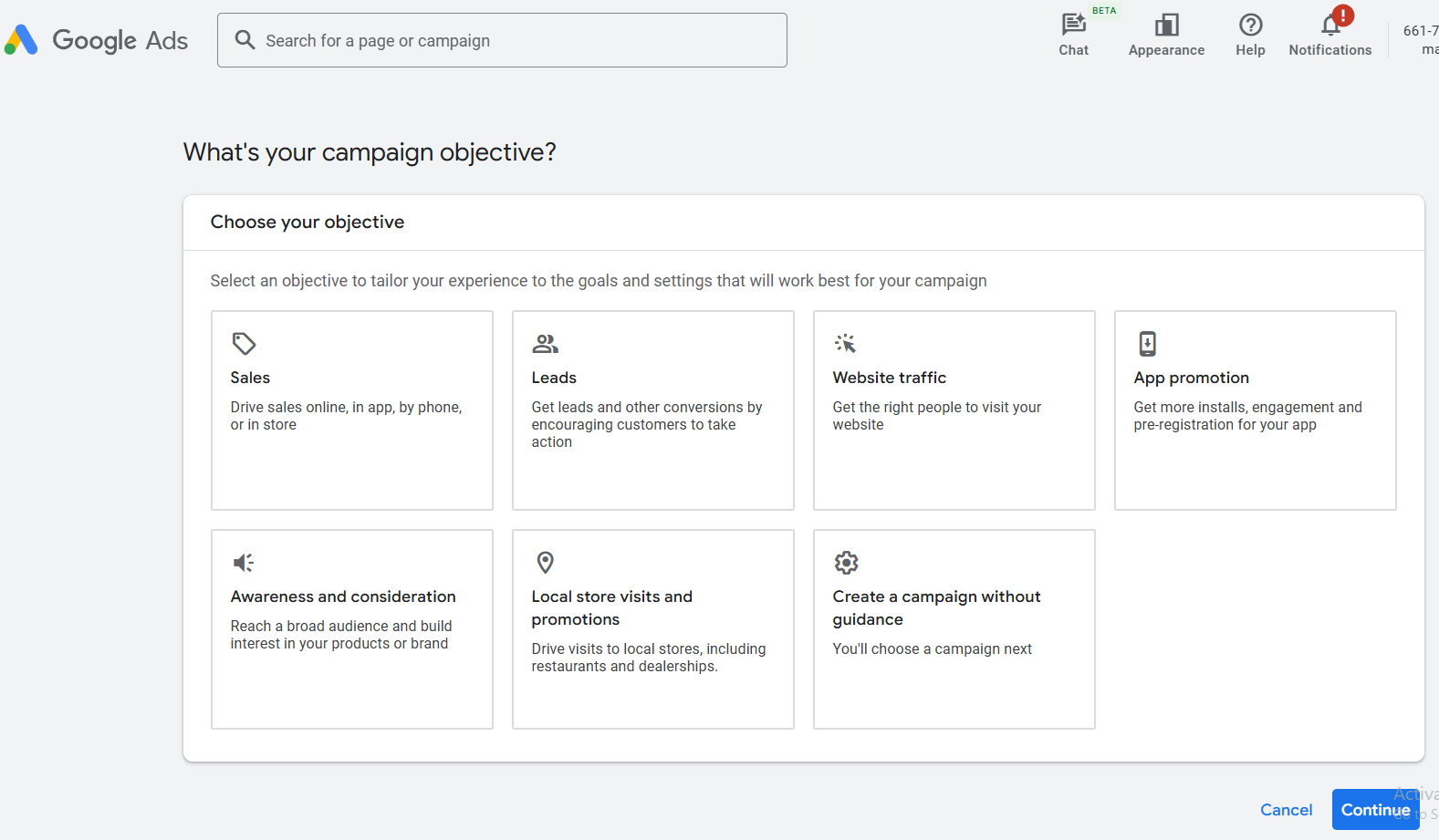
Bidding on specific keywords helps you reach users who are close to converting. It ensures that your ads are relevant for search results.
Apart from this, you can target audience segments like groups of people with specific characteristics or behaviours in common—to further refine who sees your ads.
Facebook & Instagram Ads (Meta Ads)
With this ad manager, you can run ads in different formats, conducting engaging carousel ads, video campaigns, or remarketing to users who’ve visited your site. Especially these platforms excel at visual storytelling.
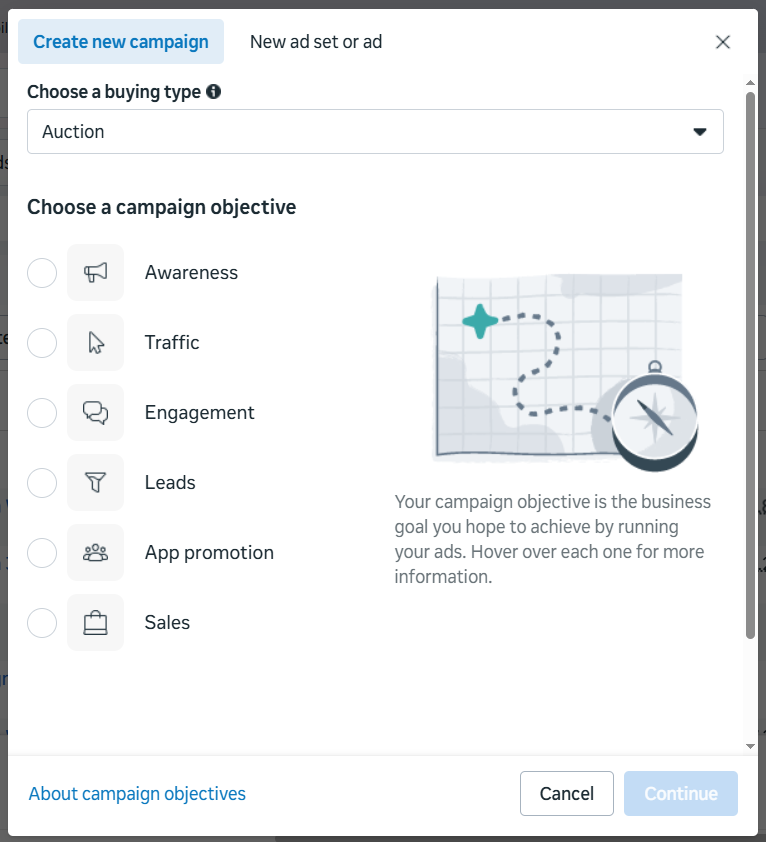
Basically, Facebook & Instagram are known as social media powerhouses for reaching out to a massive target audience.
Meta provides very detailed targeting choices based on demographics and hobbies, allowing marketers to access a database of potential customers.
LinkedIn Ads
LinkedIn Ads helps you to access over 1 billion active users on the world's largest professional networking social media platform. You can run a variety of ad types on LinkedIn, including text advertisements, sponsored messaging, and sponsored content (ads that appear in user feeds).
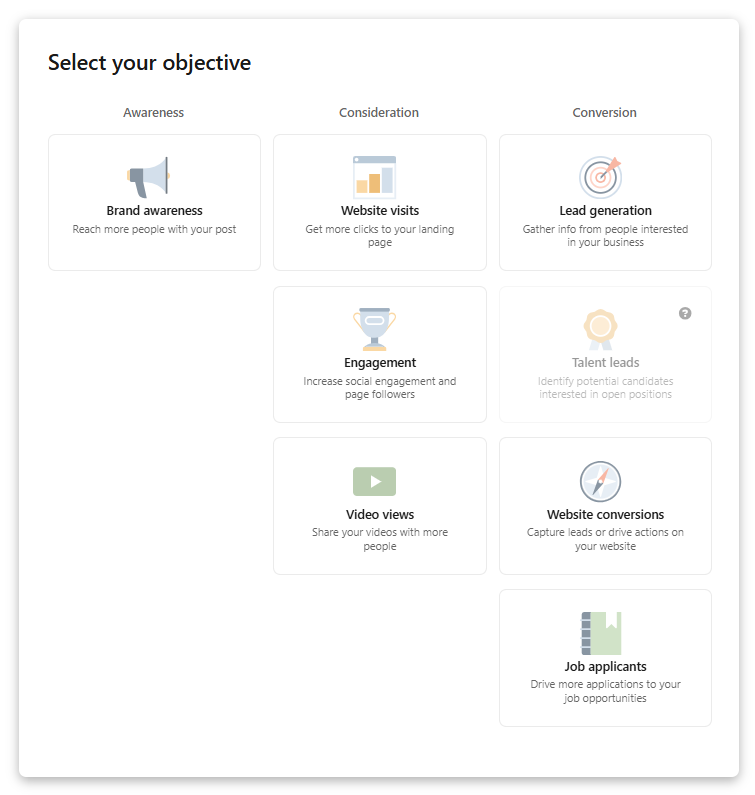
Perfect for B2B, LinkedIn targets professionals by job title, industry, or company size. It’s costly but highly effective for niche audiences.
Pinterest Ads
Pinterest Ads is quite popular for visual PPC, accordingly it's excellent for businesses in fashion, home decor, or eCommerce. It provides you promote Fixes with targeted bidding, which means you may reach people who are inspired by suggestions and ready to buy.
Bing Ads
Bing is a fantastic alternative to Google Ads. With Microsoft Advertising, you are able to advertise on Bing, Yahoo, and other sites. It can be a beneficial way to save paid ads cost, especially if you want to reach an older and possibly rich audience.
Amazon Sponsored Ads
Amazon Ads is suitable for e-commerce enterprises because it offers them the opportunity to advertise their products directly on the Amazon site. It gives you access to many people who are looking for and buying things right now.

